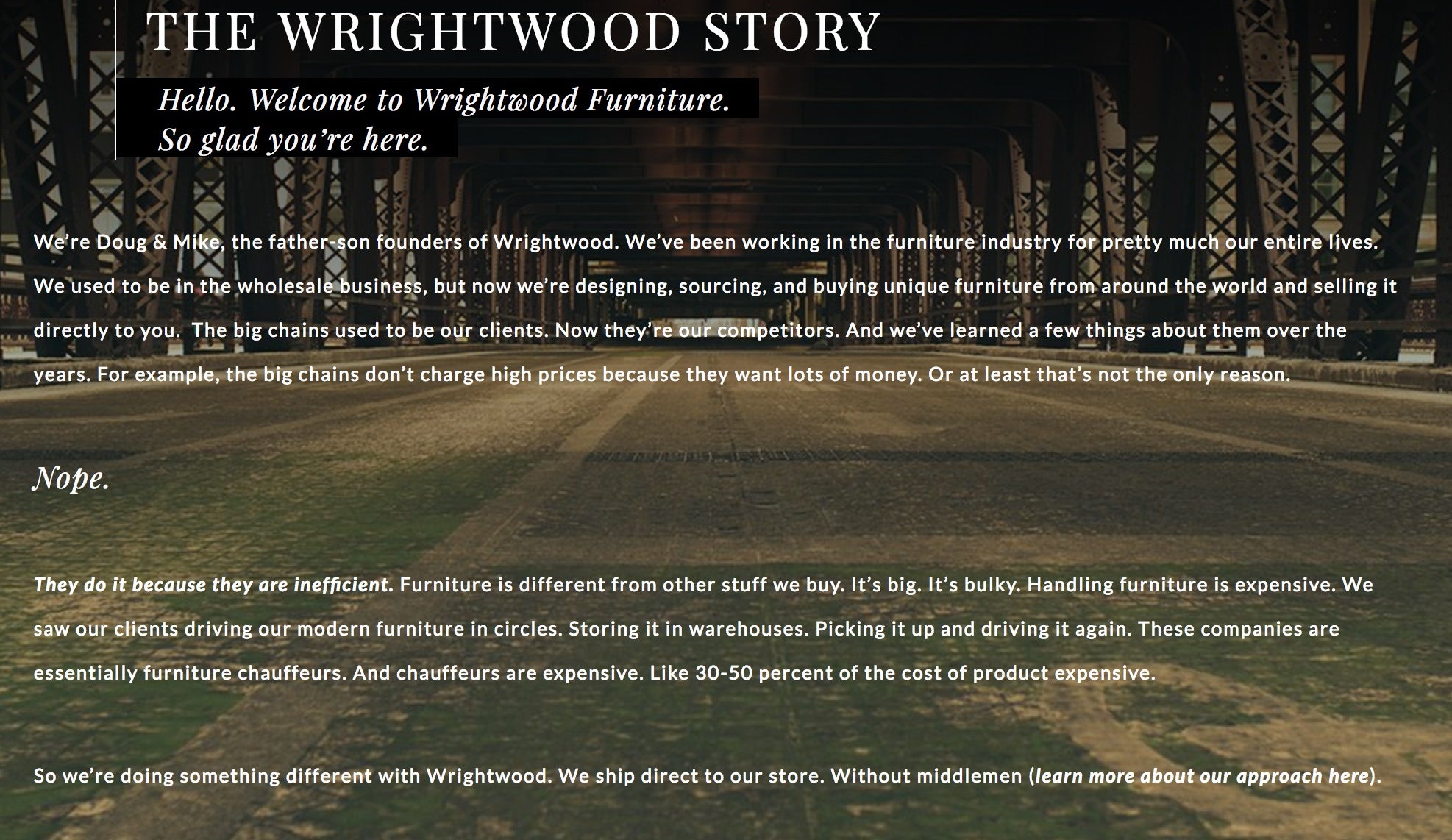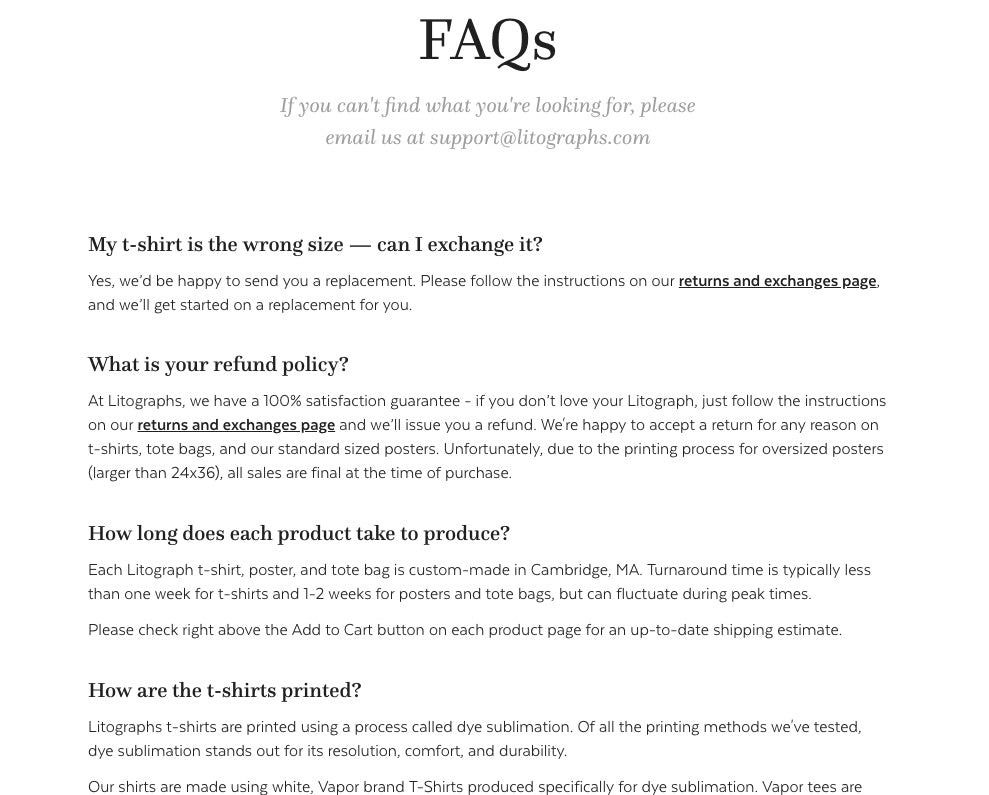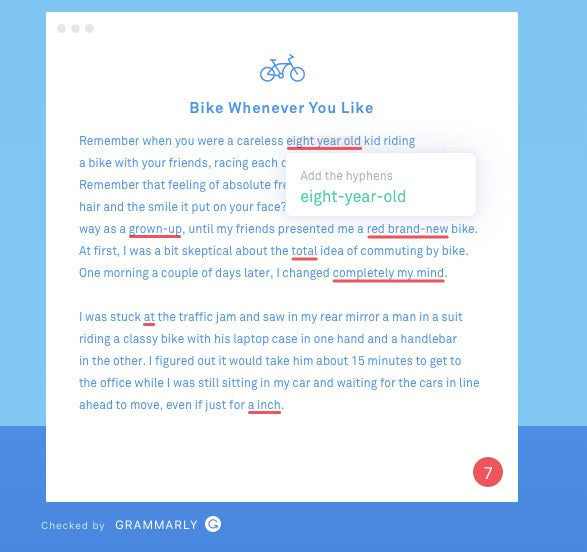Imagine visiting a new online store for the very first time. You know nothing about the brand, the quality of its products, or commitment to customer satisfaction.
Like most shoppers, you’d probably search for reviews from past customers, looking for any proof that the business met their needs.
But when your own ecommerce store is brand new with no sales yet—and therefore no reviews or social proof to leverage—how do you overcome the gap in trust to instill confidence in potential customers? This is a dilemma that almost every new entrepreneur has to face.
Customer trust is hardest to earn when you don't have any customers.
Yet, you need to earn customer trust before they'll choose to buy from you. Fortunately, there are several ways you can overcome this conundrum to establish trust as a fresh upstart and grow your ecommerce business.
In this post, you’ll learn nine strategies to win customer trust and start growing your ecommerce business from the ground up.
Free Webinar: Marketing 101
Struggling to grow sales? Learn how to go from first day to first sale in this free training course.
Reserve your seat now1. Share the human side of your business
As consumers, we tend to distrust brands at first glance. Their ultimate goal, after all, is to make money. But we are more open to trusting people.
That's why one way to overcome consumer skepticism is to show the human side of your brand. Consider introducing yourself—the person behind the business—to your customers, especially if it would add authenticity and credibility to your brand, for example if you sell products that you make yourself.
A great place to do this is in the About Us page on your site. By focusing on you as the business owner instead of just your products, you can tell your story and your brand’s story at the same time. This helps customers get to know you more, which lays the foundation for them to trust your business, too.
Take this example below from Wrightwood Furniture.

It not only captures the store owners' personal experience in the industry and demonstrates their expertise, but also pits them against the status quo and explains their reasoning for wanting to do better by their customers.
This builds the kind of emotional connection with customers that only a small business can. Both of these factors—knowing that they're knowledgeable and that they are real people—helps us feel better about purchasing from their store.
Likewise, you can add a human face to your own business, entwining your personal story with your brand's story.
2. Build relationships through content
Content is a powerful tool for connecting with new users who have no idea who you are, giving you a chance to slowly introduce yourself to them without being pushy.
Blogging regularly can show that you’re invested in your business, your industry, and your customer's problems, which is always a good sign for consumers.
Content can also help consumers get more familiar with your brand, especially if you share stories and develop a distinct brand voice. Both of these things will show the personality behind your brand and help people feel like they really know you and can trust you.
This is further aided by encouraging discussions that let you connect with people. Even if users only leave a quick comment, this gives you a valuable opportunity to talk to them one-on-one, establishing a personal relationship through their screen and inviting them to revisit the conversation again.
Content marketing is also an exceptional way to demonstrate your expertise. If consumers see that you, as the store’s owner, really know your stuff, they’ll believe in the quality of the products or services you offer.
A mattress company like Casper, for example, can use their blog to demonstrate that they know a thing or two about getting a good night's rest.

For content marketing to be effective, you must provide high-value, high-quality content on a regular basis.
3. Show customers that their security is your priority
The first two strategies focus on demonstrating your trustworthiness as a business. That’s an important start. But you’ll also want to ensure that your site itself looks trustworthy, too.
Cyber security is a huge issue with hackers exposing even major chains like Target. So it only makes sense that consumers are wary about giving anyone their credit card information.
One way to combat this is to use security-boosting apps that not only add another layer of protection, but inform customers by displaying security badges on your store (like the Shopify Secure badge).
The McAfee Secure Shopify plugin is a great example. Not only does it help protect user information, but a big part of its value is that it places a badge from a well-known security company on your site, which can help improve conversions. Likewise, you can also consider the TRUST app for this purpose.

Offering multiple payment options is another way to make consumers feel a little more comfortable about buying from you. Some shoppers simply prefer certain payments methods over others.
Offering PayPal, for example, acts as a secure financial gateway that many customers prefer to use, feeling it adds another layer of protection. One study even found that while customers trust their primary banks more overall and didn’t like to deposit funds into PayPal, 69% of those surveyed believed that PayPal was better at protecting their financial information. If you’re able to offer payment options that users trust more, they’ll trust you more, too.
BioLite Energy’s checkout highlights a variety of digital wallet payment options at the very front of their checkout, such as ApplePay, PayPal, and Amazon Pay, which likely decreases their abandoned cart rates.

4. Highlight an excellent return policy
If you were on the fence about making a purchase, what’s the one thing that would immediately make you feel better about buying? A great return policy.
Good return policies are seen as a sign of quality customer service. They show that you prioritize the customer experience and that you're confident about your product, so much so that customers can send it back for a refund if they don't like it.
Return policies immediately lower the potential risk your customers assume when they buy online. If you offer free returns within thirty days, no questions asked, people will be a lot more willing to purchase from you.

It’s not just enough to have a great return policy, though, you also want to advertise it on your site:
- Create a page that outlines your full return policy (this can also part of your FAQ page)
- Have a section dedicated to returns on your product pages (like in the example above from Press)
- Display a badge on your site to highlight money back guarantees (Shopify apps like Trust Seals can help)
- Link to your return policy in the footer of your site
5. Make yourself available for customer inquiries
Customers who are unsure about your brand may reach out to you through several different methods, including your site's contact form, email, and social media profiles. They may want to know about return policies, shipping dates, or other product information.
It’s important to answer these inquiries as quickly and thoroughly as possible.
Who would you trust more: a brand that responds within two minutes with a full answer to your question, or one that takes a day to deliver a four-word answer?
Speed is particularly important in today’s age, where instant gratification has made consumer demands more urgent. Because of this, if possible, integrate live chat on your site (such as Shopify's Messenger channel). Knowing that they can get a near-instant response may encourage potential customers to send questions, and you can chat with them to address concerns or objections in real time, even up-sell or cross-sell other products.

Live chat is becoming a staple of customer service excellence. It’s also a preferred method of communication for many customers, with 92% saying they felt most satisfied during the buyer’s journey when using the feature and 53% of consumers preferring live chat to other methods of communicating with a brand.
6. Provide detailed product information
The more customers know about what they’re about to buy, the more likely they are to actually go ahead and purchase it.
Being specific helps—instead of saying “leather,” it sounds much better to say “vachetta leather.”
Some things to consider adding to your product descriptions include:
- Exact measurements of the item
- Exact weight of the item
- Product ingredients/manufacturing materials
- Warranty information
- Individual product features (“Adjustable strap”) and their subsequent benefits (“so you can ensure this purse is custom fit to you.”)

It also helps to have as many images and videos as possible to demonstrate the product quality and how it can be used. This helps people envision it in their own lives, and the clearer they can see it, the more likely they are to believe you can deliver what you say you can.
For more on writing better product descriptions, be sure to check out 9 Simple Ways to Write Product Descriptions that Sell.

Free Reading List: Copywriting Tactics for Entrepreneurs
Is your website content costing you sales? Learn how to improve your website copy with our free, curated list of high-impact articles.
Get our Copywriting Tactics reading list delivered right to your inbox.
Almost there: please enter your email below to gain instant access.
We'll also send you updates on new educational guides and success stories from the Shopify newsletter. We hate SPAM and promise to keep your email address safe.
7. Consider giving away samples
Finding those first few customers to give you a chance and help you gain traction can be a challenge. One sure-fire way to get your products into customers hands is to give it away.
Product samples or giveaways can generate interest in your business and inspire trust by eliminating all the risk. Offering customers the chance to "try before you buy" isn't for every business. But if you sell a product that you can afford to give away in smaller quantities (such as food), you can earn consumer confidence in the product first and then more easily convert them into paying customers afterwards.
There are several different ways to give out your products for free in a way that will yield actual results. These include:
- Giving them to a set number of people and asking for a review in return. You can capture reviews or testimonials and display them on your site once there are enough to build credibility.
- Send your products to influencers or bloggers who can get the word out to your target audience for you.
- Distribute free samples through pop-ups or events to drum up interest, knowing that people who like the product will search you out later online.
Remember that product samples and giveaways are a great way to start to build trust, but that for these efforts to be effective, you must get your products in the right hands to maximize your return.
You can hear more about free sample strategies that worked for other store owners in the following episodes of Shopify Masters:
- How Impact Mouthguards Grew a 6-Figure Business by Giving Away Their Products
- How HDX Hydration Sells Someone a Drink Before They Know What It Tastes Like
8. Use an FAQ page to address buying concerns
A strong FAQ page can accomplish a lot.
It can answer user questions about both your brand and your products, demonstrate your expertise, provide product information, and show customers how you run your business.
This is just another way for users to get more familiar with your brand and more comfortable with purchasing from you.
FAQ pages are often written with the intention to inform users, overcome objections, and alleviate any qualms about purchasing. It also gives you more room to tell your brand’s story, reminding users about what makes you different and showing them why they should become your customers.
Take this example from Litographs. Every question is asked in the voice of the customer, and each answer gives a detailed explanation and refers visitors to other parts of the site (e.g. the return policy) to learn more.

Your FAQ page can include:
- Information about your brand that didn’t fit into the “About Me” or homepage sections
- General product information that you know matters to your customers(“Yes, our products are organic, paraben-free, gluten-free, and soy-free)
- Information about certifications or licenses that can establish trust, like a kosher certification
- Answers to questions that potential customers are continually asking you, or that they ask your competitors
If you haven't created your FAQ page yet, you can learn more about it in The Benefits of an FAQ Page (And How to Do It Right).
9. Fix the little things that erode trust
Last, but definitely not least, don’t forget to take an honest close look at your store, on desktop and mobile, from your homepage to checkout.
Ask colleagues and friends if they would trust the site enough to buy from it. If so, why? If not, what’s creating that sense of unease? Is your homepage unclear about your business is about? Are your shipping times not transparent enough?
You may know that you’re honest and trustworthy, but that doesn’t mean that customers do.
Comb your site for small mistakes. If there’s obvious spelling or grammar errors in your copy, you can lose credibility and hurt your conversion rates. Even if you're not a writer, you can run your copy and content through Grammarly to catch any stray errors.

Broken links also look sloppy, and poor quality graphics looks unprofessional and cheap. These might seem small but they can affect whether a customer trusts you in just a split second, so don’t ignore these details.
Trust comes before sales
Trust is a requisite for purchase, especially when shoppers today have countless options available at the click of a mouse.
Every business owner has to start at the bottom with no sales and no social proof to leverage. With these strategies in place, however, you’ll hopefully be in a better position to win your first few sales and work your way up to a reputation that continually inspires trust from a growing customer base.


